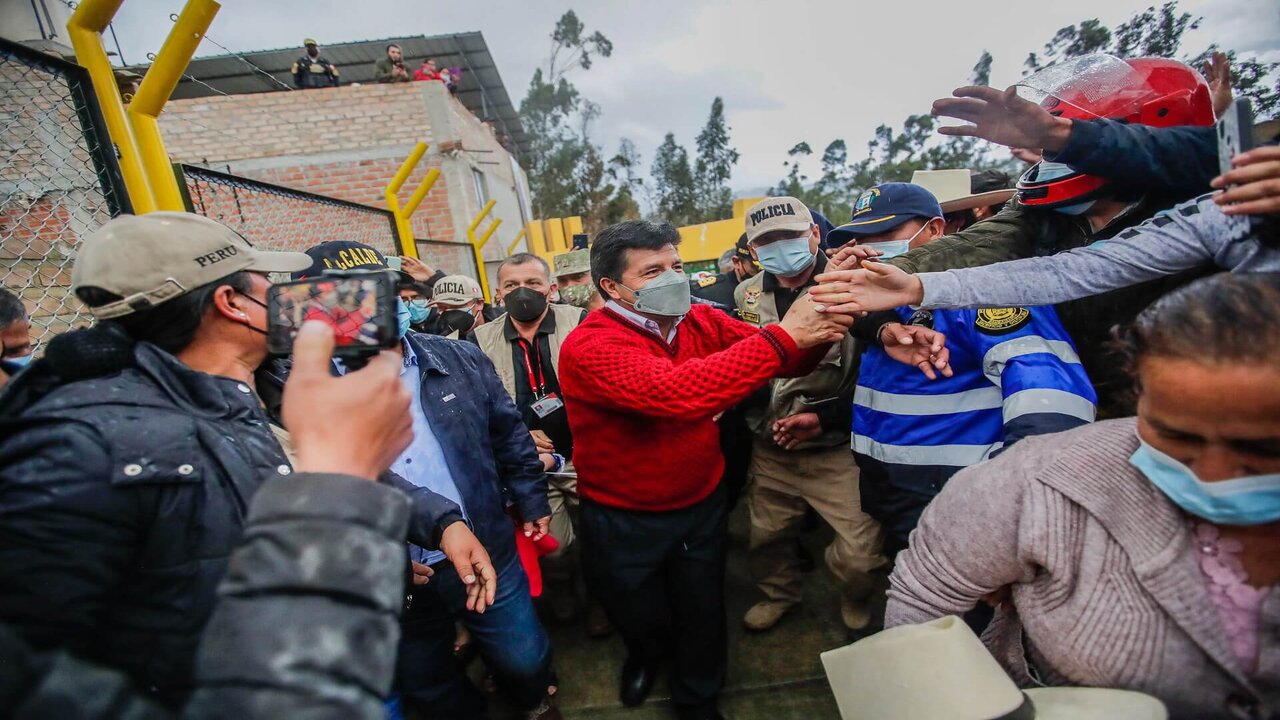The Eternal Peruvian Crisis: Beyond Pedro Castillo
Published:
“An explanation on governance and why analyzing the Peruvian government system is crucial to prevent a crisis.”

Crisis after crisis
Since 2017, Peru has become a curious case of political upheaval and limited governance. Political crises between the Executive and Legislative powers led, within a span of five years—from 2016 to 2021—to a National Referendum, four presidents, and the dissolution of the Legislative branch once.
The 2021 elections and the change in the Executive and the composition of Congress did not moderate this crisis. On the contrary, conflicts between powers persist to the extent that President Castillo faced his second presidential vacancy motion on March 28th, a motion that failed due to a lack of 32 votes.
How, then, can this political crisis be understood? Why do conflicts persist despite the election of a new president and a new congress? To decipher Peru’s problem, it is necessary to first analyze its system of government.
The Peruvian government system
Initially, the constitutional structure of this state resembles the model of a presidential system. Peru possesses a monist executive, where the head of state is also the head of government. Additionally, the leader is elected through direct universal suffrage for a fixed term of 5 years.
Despite this, Peru harbors certain institutions similar to parliamentary systems. This governance system early on incorporated some elements from Western democracies into its Constitution.
As noted by Milagros Campos, this was due to the direct influence of the Constitution of Cádiz and the constitutional framework of the Spanish government. The introduction of parliamentary system elements into the presidential system was an ongoing process.
In several cases, the inclusion of these institutions, primarily control mechanisms, occurred through the enactment of new constitutions or reforms to existing ones.
Hence, the Peruvian government system acknowledged and adopted institutions such as law observation (1826), ministerial questioning (1860), ministerial censorship (1867), the vote of confidence (1920), Congress dissolution (1979), and the vote of confidence (1993).
Many of these measures were introduced to limit the power of the Presidency or to provide certain tools in the face of an obstructive Congress. In most Latin American cases, an unchecked Executive has led to the breakdown of the democratic system and its replacement with an authoritarian one.
From this aspect, it’s important to highlight that both the dissolution of Congress (1979) and presidential vacancy (1839) have been part of the legal framework of this country for many years. How, then, can it be explained that vacancy processes or the dissolution of Congress gained prominence only in the last five years?
The importance of the majority
Peru’s governance began to depend on obtaining a majority in the Congress of the Republic despite the process of “parliamentarization” of the Peruvian presidentialism, aiming to create a greater possibility of agreement between both powers.
Therefore, when the ruling party did not have majority support in the Legislature, political crises arose, leading to coups against presidents or the execution of restrictive policies.
This aligns with Juan Linz’s study that critiques the presidential system. According to this researcher, incentives for non-cooperative strategies among state groups are established due to the implementation of presidentialism.
These incentives lead to institutional blockages, potentially resulting in military interventions and triggering a democratic crisis. In summary, without an Executive with a presence in Congress, a country’s governance may become unsustainable. Presidentialism can only perform well when accompanied by a majority in Congress or if there is a coalition supporting its policies.
Since the return to democracy in 2000 until 2016, most Peruvian presidents did not have a majority bloc, but they prevented the formation of an opposition coalition. This allowed them to complete their terms. The highly fragmented Peruvian political party system also reduced the likelihood of ruling coalitions amassing a significant percentage of seats, forcing them to engage in dialogue.
The winning party of the presidency obtained 37.5%, 30%, and 36.2% of the total seats in the general elections of 2001, 2006, and 2011, respectively. It’s important to note that during these periods, the ruling party was not necessarily the majority.
In 2006, the president and his party did not have a majority in Congress. However, it’s important to consider that, in the electoral processes of 2001, 2006, and 2011, the difference between the ruling and opposition blocs was not overwhelming. Although the ruling bloc did not have the majority, the opposition bloc also did not have absolute dominance in Congress.
The maximum difference between blocs was 17 seats in the 2001 general elections, and the minimum was 9 seats in the 2006 elections. Therefore, the ruling party and the opposition depended on agreements and cooperation between blocs to propose policies, legislate laws, and execute them.
This pattern was interrupted by the results of the 2016 electoral process. In this election, Fuerza Popular obtained a historic majority of 73 seats.
This was combined with increased polarization and disagreements between the government bloc and the opposition, leading to the first impeachment attempt against then-President Pedro Pablo Kuczynski in December 2017, only 18 months after being elected.
Moral incapacity or vacancy
On another note, it’s worth delving into the vacancy motion. The current Peruvian political constitution considers “moral incapacity” of the president as grounds for impeachment, without detailing what attitudes or actions qualify as such. Therefore, the term “moral incapacity” possesses flexible interpretations.
This could refer to permanent mental incapacity, and thus be included as part of physical incapacity, or to a conduct by the president that renders them unsuitable for office. Either way, vacancy due to “moral incapacity” is filled with conceptual voids.
However, this cause was only employed once: during Fujimori’s resignation and departure from the country following a corruption scandal in 2016. This exceptionality was interrupted from the minority government led by Pedro Pablo Kuczynski.
From 2016 to the present day, there have been six impeachment processes. This resulted in Kuczynski’s resignation, Vizcarra’s impeachment, and two processes against Castillo that were rejected.
Castillo, responsible for the political crisis?
In this second impeachment process, the President of Peru was accused of alleged lies and contradictions in the ongoing fiscal investigations against him, as well as appointments of State ministers and other officials.
These accusations have not been confirmed after a civil trial and are still under investigation. However, the increased political polarization and the flexibility of the grounds for vacancy due to moral incapacity seem to indicate that the motion rejected by Congress will not be the last.
The Peruvian crisis goes beyond Pedro Castillo and his potential missteps, linking to institutional causes of this country and its system of government.

Leave a Comment